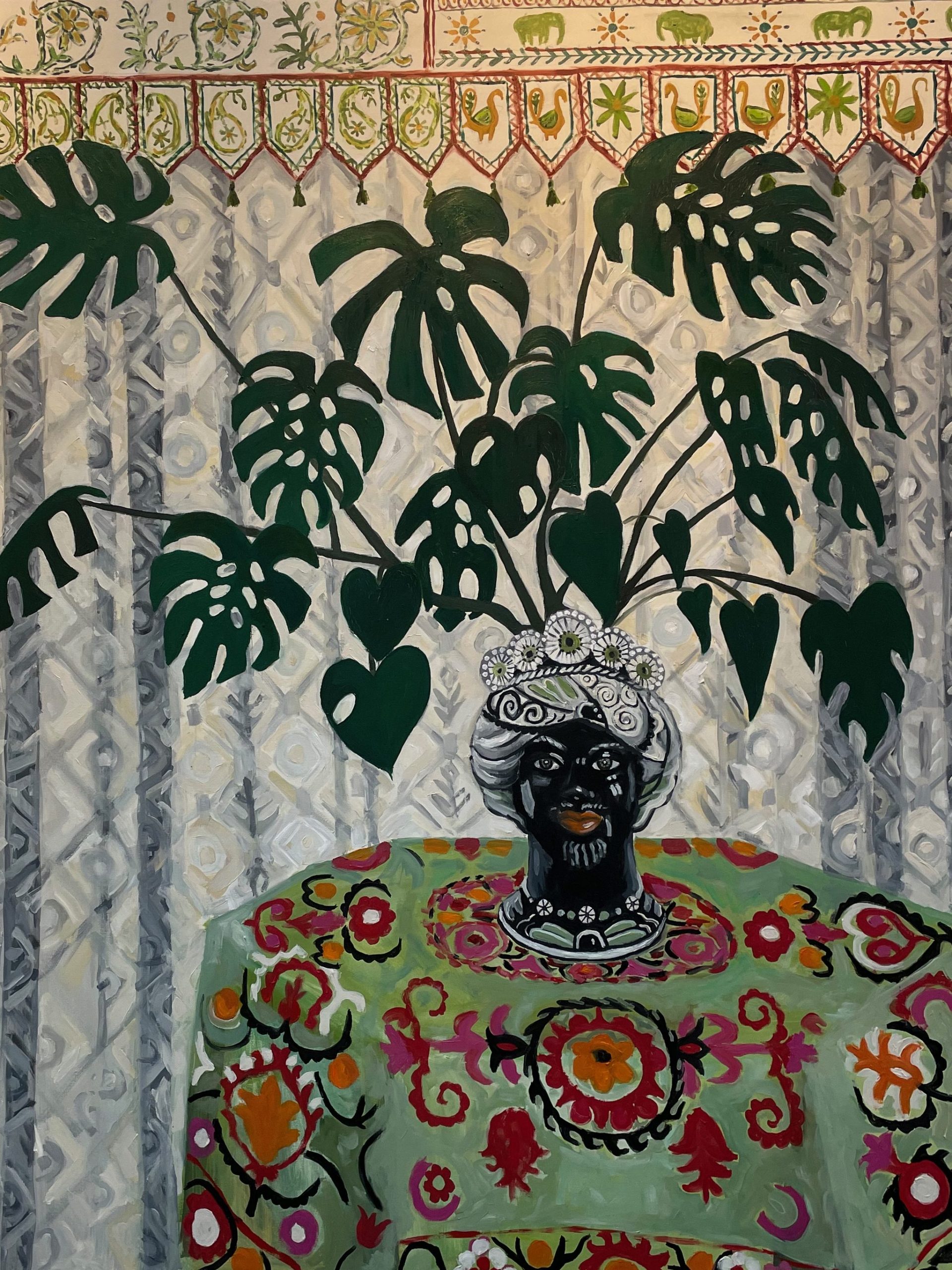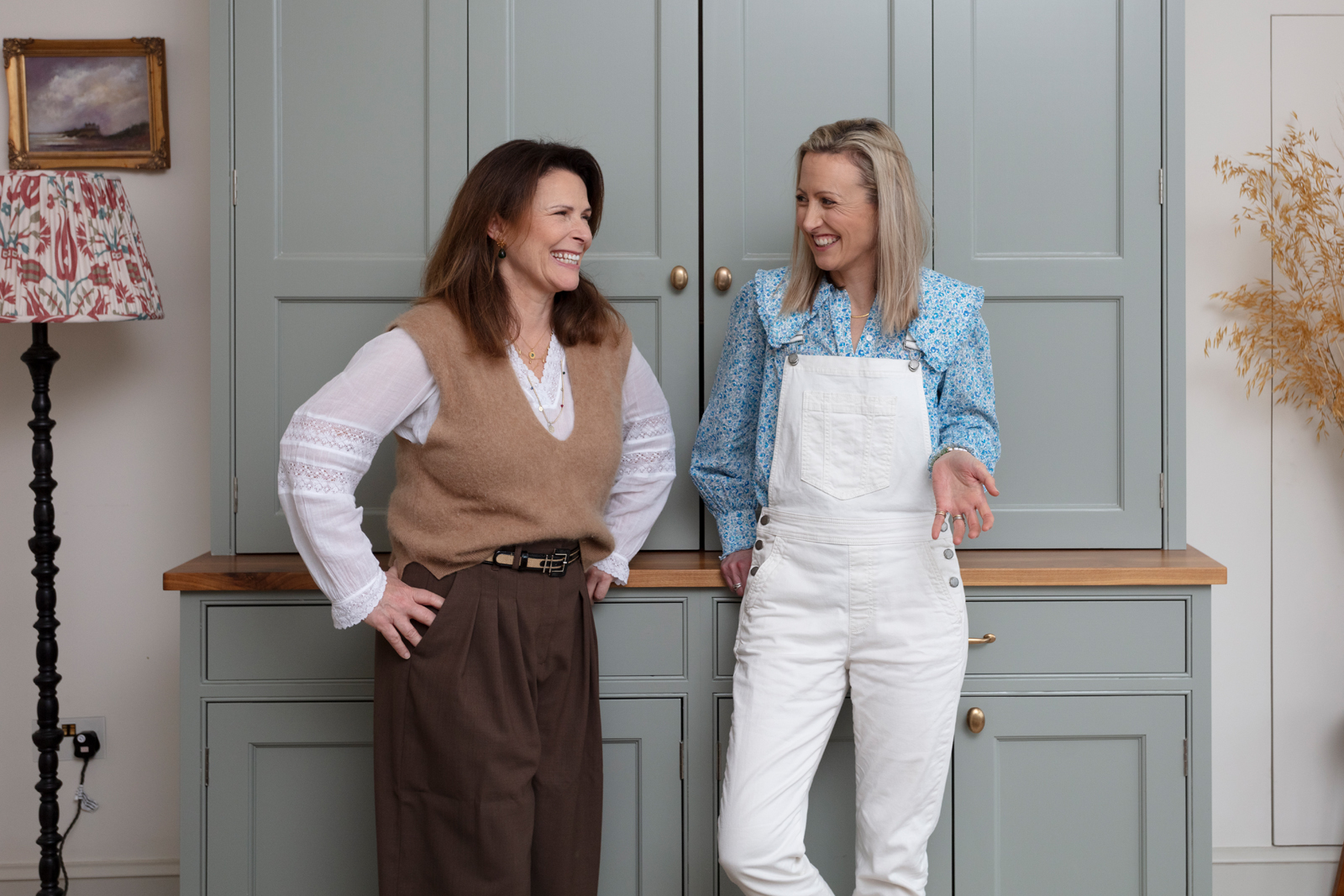Above: Photo by kind permission of artist Silvy Weatherall who has hung one of her corrugated iron pieces to decorate the terrace of her Spanish finca. The industrial feeling of the piece sits perfectly in the old agricultural building converted into a family home.
“Art is such a critical part of creating interest and ambience in a room and is something that Toddy and I take very seriously.”
I always know when an interior is successful when I walk into it for the first time and my eyes dance around the room trying to work out why it arouses such a positive feeling. Over and above my appreciation, as an interior designer, of cleverly layered fabrics, rugs, lamps, tables, and chairs, is the extra emotional response that only art can evoke.
Art is such a critical part of creating interest and ambience in a room and is something that Toddy and I take very seriously. So much so that we often like to start with a piece of art for inspiration around which we will build an entire scheme.
Here are my guiding principles for planning art for residential and commercial interiors.
Take stock
Before diving headfirst into sourcing and buying art, take a step back and evaluate your existing art collection and the space you are decorating. Consider the size, colour scheme, and atmosphere of the room that you wish to create. Understanding these factors will help you narrow down your options and find art pieces that complement your existing pictures and space.
Embrace your own style – buy what you love
Art is such a deeply personal thing, the number one rule is to buy what you love. Don’t buy something that ‘will do’ just because you think it complements your interior scheme or your friend likes it.
Art is subjective, and what appeals to one person may not resonate with another. The last thing you want is a painting on your wall that your stylish friend loves but that doesn’t ‘talk’ to you.
Creating a mood
Think about the atmosphere you want to create in each room. When Toddy and I are sourcing art for a client’s bedroom, for example, we may be looking for more soothing pieces, whereas for a hallway, we may recommend a bold and colourful painting or vintage poster that makes a statement when people walk through the door.
Mix it up
Now that you have a plan, the next step is the fun bit… sourcing! We love mixing art in a room to create dynamic displays. Think beyond just prints and paintings. We often use antique and vintage plates to add interest to walls, as well as textiles, photography and, of course, mirrors are always brilliant for bouncing light. Recently, I found a huge set of antique Bedouin ceremonial beads in bone and ebony in a reclamation yard in Spain. I had them framed and they look incredible on the wall of a mezzanine in a Spanish beach house.
Planning an art wall
Art walls are a great way of decorating a space without breaking the bank. They allow you to use less ‘spenny’ pieces that, when arranged together, create something rather special. But beware, it is easy to over-think the hanging! To avoid this, first lay out your pictures on the floor, preferable with uneven spaces between them, and play with placement. When you are happy with your arrangement, take a photo to help guide you when hanging them.
Consider scale
When hanging art, scale is key. A tiny piece may get lost on a large empty wall, while an oversized piece can overwhelm a smaller space. Aim for balance and proportion by choosing art that complements the scale of the room. And don’t forget to leave enough space around the artwork to allow it to ‘breathe’.
Common mistakes
The most common mistake when hanging art is to hang it too high where you can’t properly appreciate it. We aim for the centre to be at eye level, typically 57 to 60 inches from the floor. Leave 6 to 8 inches between furniture and the artwork’s bottom. Maintain 2 to 3 inches of spacing between frames in groupings. Adjust height based on room function, lower for seated areas and higher for standing spaces. Experiment with placement using masking tape. For high ceilings, hanging art slightly higher can balance the space. Ultimately, prioritize what visually complements your space.
Don’t rush it!
While it may be useful to source an anchor piece of art for an interiors project, try not to rush into building an entire collection. Just because there are spaces to fill doesn’t mean that the best way to do it is all at once. Patience really is a virtue when it comes to creating spaces that feel like they have evolved over time, which is the look we are after.
And finally…
In my own home, much to the annoyance of my husband, I am constantly moving art around as I add new pieces to our collection as I spot something I can’t live without.
It’s a creative process that I find relaxing and rewarding but I appreciate that this may not be the case for everyone! I hope therefore that these tips help you to embrace the process, and even better, enjoy it!








